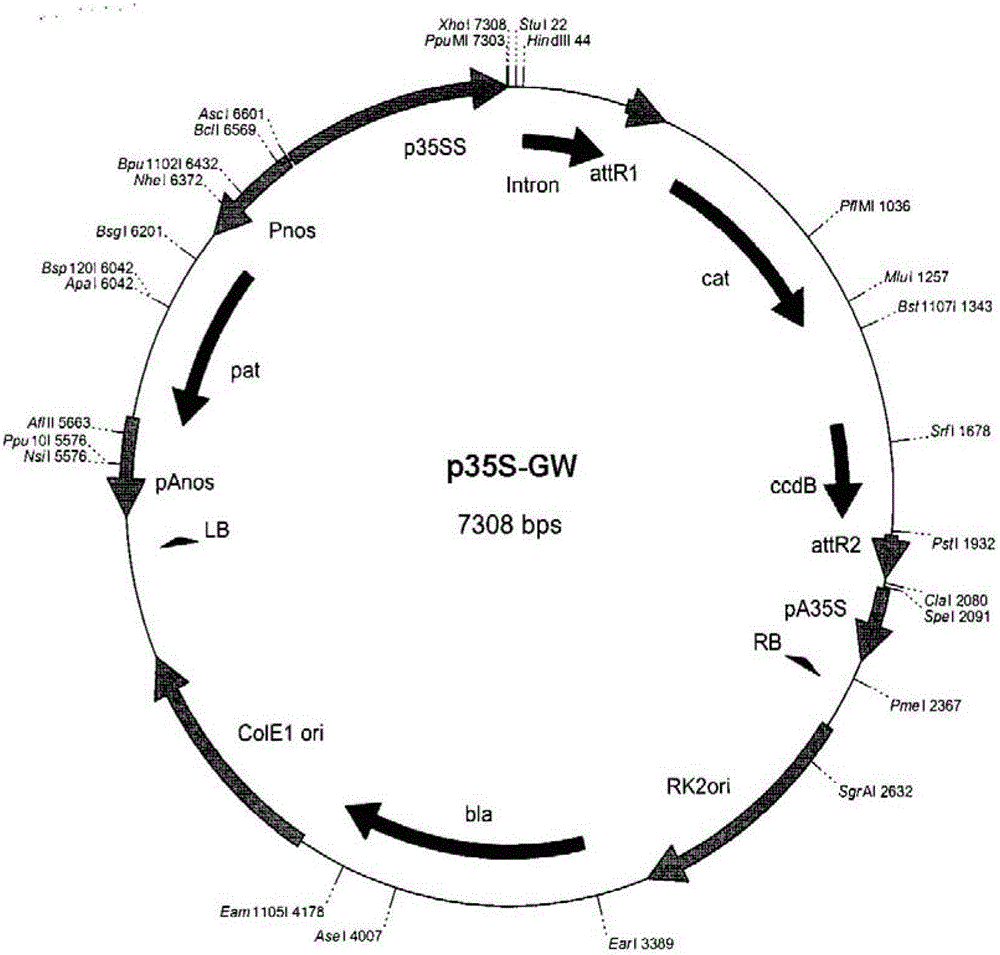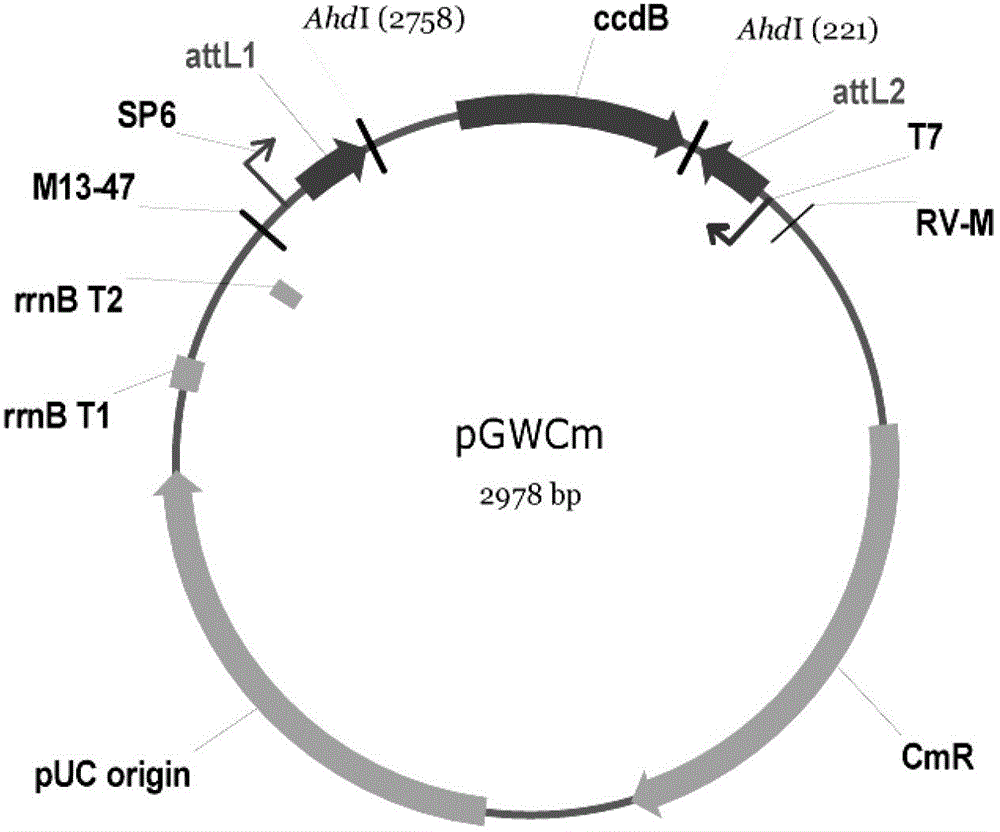Optical soybean receptor protein GmZTL2 and application thereof
A photoreceptor and soybean technology, applied in the field of plant genetic engineering, can solve the problems of long cycle, strong parental dependence, and wide adaptability of soybean photoperiod, and achieve the effect of prolonging plant growth period and inhibiting plant flowering
- Summary
- Abstract
- Description
- Claims
- Application Information
AI Technical Summary
Problems solved by technology
Method used
Image
Examples
Embodiment 1
[0030] Example 1 Cloning of soybean photoreceptor gene GmZTL2
[0031] Using the forward primer 5′-ATGGAGTGGGACAGCAATTCCGATC-3′ and the reverse primer 5′-GCAATGCTTAGCATCCATTCCCG-3′, clone and sequence the cDNA of soybean Kennong 18 (purchased from Heilongjiang Bayi Agricultural University) (Glycine max L Kennong 18) The GmZTL2 gene is obtained, the gene sequence of which is shown in SEQ ID NO.2; the amino acid sequence of the protein encoded by it is shown in SEQ ID NO.1.
[0032] The PCR reaction program used to amplify the target gene GmZTL2 was: 95°C 5min pre-denaturation; 95°C 30s, 50°C 35s, 72°C 2min, 25 cycles, 72°C 10min extension.
Embodiment 2
[0033] Example 2 Amino Acid Sequence Analysis of Protein Encoded by Soybean Photoreceptor Gene GmZTL2
[0034] The homology between the GmZTL2 protein sequence of the soybean photoreceptor gene and the amino acid sequence of the Arabidopsis ZTL protein is 86.8%, and the homology is even more high in the conserved functional domains (LOV, F-box and Kelch repeats domain). Therefore, it is speculated that GmZTL2 also has the function of inhibiting flowering similar to the function of the Arabidopsis ZTL gene.
Embodiment 3
[0035] Example 3 Cloning vector of soybean photoreceptor gene GmZTL2
[0036] The PCR product that amplifies and obtains from embodiment 1 is cloned directly according to the TA cloning method image 3 on the indicated pGWCm vector. Firstly, the pGWCm vector was hydrolyzed with Ahd I endonuclease, and then the digested product was recovered with a gel recovery kit to obtain the T vector. Then the PCR product and the T vector were ligated at 16° C. for 12 hours, the ligated product was transformed into Escherichia coli DH5α, amplified therein, positive clones were screened and sequenced.
PUM
 Login to View More
Login to View More Abstract
Description
Claims
Application Information
 Login to View More
Login to View More - R&D
- Intellectual Property
- Life Sciences
- Materials
- Tech Scout
- Unparalleled Data Quality
- Higher Quality Content
- 60% Fewer Hallucinations
Browse by: Latest US Patents, China's latest patents, Technical Efficacy Thesaurus, Application Domain, Technology Topic, Popular Technical Reports.
© 2025 PatSnap. All rights reserved.Legal|Privacy policy|Modern Slavery Act Transparency Statement|Sitemap|About US| Contact US: help@patsnap.com



